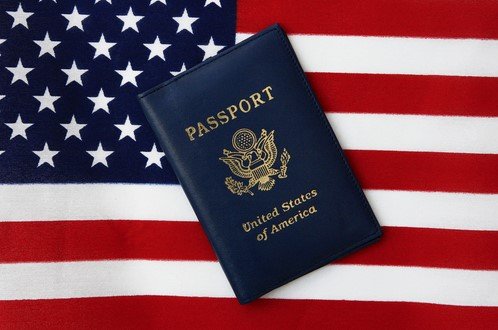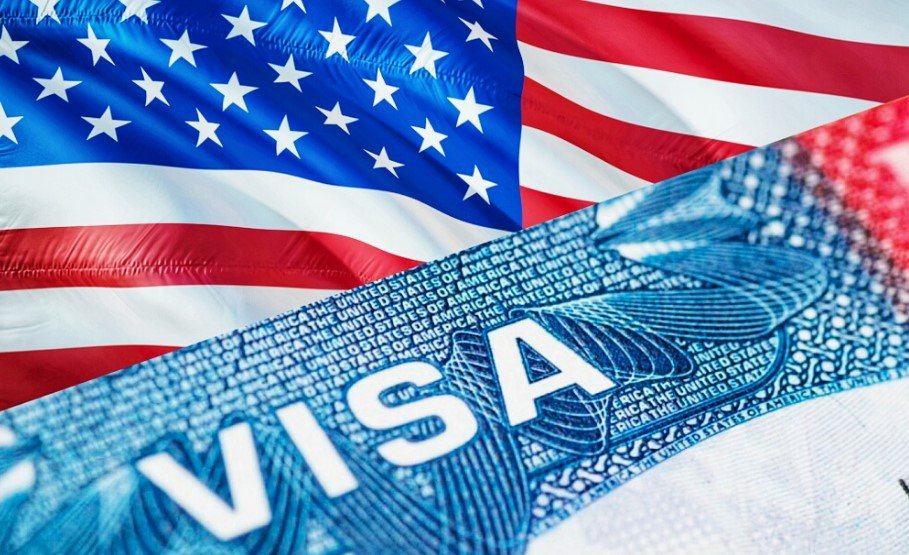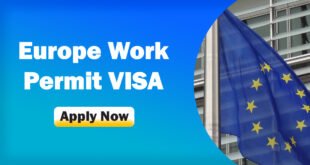How to Obtain a USA, UK, Canada, Australia Work Visa:
The United States is a top destination for individuals from all over the world seeking job opportunities, career advancement, and the chance to work in one of the world’s largest economies. If you’re planning to work in the U.S. obtaining a work visa is essential. This guide will walk you through the types of work visas available, eligibility requirements, the application process, and tips to increase your chances of success.

Types of USA Work Visas
There are several types of work visas in the United States, each tailored to different categories of workers. The most common ones include:
H-1B Visa: Specialty Occupations
Designed for professionals in specialized fields such as IT, engineering, finance, and science.
It requires a job offer from a U.S. employer, who must also file a petition on behalf of the employee.
applicant must have at least a bachelor’s degree or equivalent in the specialty area.
L-1 Visa—Intra-Company Transfer
For employees of multinational companies who are transferring from a foreign branch to a U.S. branch.
The L-1A visa is for executives or managers, while the L-1B visa is for employees with specialized knowledge.
O-1 Visa: Extraordinary Ability
For individuals with extraordinary abilities or achievements in fields like science, arts, education, business, or athletics.
Requires evidence of national or international acclaim and an invitation from a U.S. employer or organization.
E-2 Visa: Investor Visa
For individuals from countries with U.S. treaties who are investing in a U.S. business.
Requires a significant investment in a U.S. business and proof of active role in the management.
H-2B Visa: Temporary Non-Agricultural Workers
For seasonal or temporary non-agricultural work, often used in industries such as tourism, hospitality, and construction.
U.S. employers must show a temporary need and prove that there are no available U.S. workers for the job.
J-1 Visa: Exchange Visitor
For individuals participating in exchange programs, such as internships, work-study programs, or cultural exchanges.
Typically granted for educational, cultural, or professional exchange and requires sponsorship by an exchange organization.
Step-by-Step Process for Obtaining a U.S. Work Visa
The process to obtain a U.S. work visa can be complex and involves several key steps. Here’s a breakdown of the general process:
- Find a U.S. Employer Willing to Sponsor You
Most work visas require a job offer from a U.S. employer who is willing to sponsor your application.
Your employer must file a petition with U.S. Citizenship and Immigration Services (USCIS) on your behalf. - Submit the Petition to USCIS
Your U.S. employer must submit Form I-129 (Petition for Nonimmigrant Worker) to USCIS for approval.
For H-1B visas, this petition must be filed within the annual quota limit (currently 85,000 for most applicants). - Wait for Approval and Receive Form I-797
Once USCIS approves the petition, you will receive Form I-797, the Notice of Action.
This form allows you to proceed to the next step, which is applying for a visa at a U.S. embassy or consulate in your home country. - Complete Form DS-160 Online
The DS-160 form is an online visa application form required for all nonimmigrant visa applicants.
You will need to provide details about your background, employment, and purpose of travel. Once submitted, keep the confirmation number for your interview. - Pay the Visa Application Fee
Each visa type has a specific application fee, which you must pay before your interview.
Fees vary by visa type and sometimes include additional processing fees depending on the country. - Schedule and Attend the Visa Interview
After submitting the DS-160 and paying the fees, schedule a visa interview at the U.S. embassy or consulate in your country.
Bring the required documents, including your passport, DS-160 confirmation, Form I-797, recent photographs, and any other documents specified by the embassy. - Attend Your Interview
During the interview, the consular officer will ask about your job, employer, and the purpose of your stay.
Be prepared to discuss your qualifications and demonstrate that you plan to return to your home country after the visa expires. - Await Visa Issuance
If approved, the consulate will process your visa, which can take anywhere from a few days to several weeks.
You’ll receive your passport back with the visa stamp, allowing you to travel to the U.S. for work.
Tips to Increase Your Chances of Approval
Choose a Reliable Sponsor: Having a reputable employer and a strong job offer can significantly impact your application.
Stay Organized: Ensure that all documentation is complete and accurate to avoid delays or denials.
Provide Evidence of Strong Ties to Your Home Country: This is especially important for nonimmigrant visas to demonstrate you’ll return after your visa expires.
Prepare for the Interview: Familiarize yourself with the details of your employment and be ready to discuss your qualifications. - Additional Considerations
Visa Duration and Extensions: Work visas are generally issued for a specific duration, depending on the visa type. Some can be extended, but others, like the H-2B, are strictly temporary.
Dual Intent: Certain visas, such as the H-1B and L-1, allow for “dual intent,” meaning you can apply for a green card while on these visas.
Work Authorization for Dependents: In some cases, dependents of work visa holders, such as spouses on an H-4 visa, may be eligible for work authorization.

How Long Does It Take to Get a U.S. Work Visa?
Obtaining a U.S. work visa can be a complex process with varying timelines, depending on the type of visa and individual circumstances. Generally, the process can take anywhere from a few weeks to several months. Here’s a closer look at the types of work visas and factors that influence processing times.
Types of U.S. Work Visas
The U.S. offers different work visas based on employment type, skill level, and duration. The most common types include:
- H-1B Visa: For specialized professionals, such as engineers, scientists, and IT specialists.
- L-1 Visa: For intracompany transfers of executives or managers from foreign offices to U.S. branches.
- O-1 Visa: For individuals with extraordinary abilities in arts, sciences, education, business, or athletics.
- E-2 Visa: For investors and entrepreneurs who are investing a significant amount in a U.S. business.
Application Process and Timeline
The timeline varies significantly across visa types. On average:
- H-1B Visa: Processing takes 4-6 months, but applicants can pay for “premium processing,” which shortens the wait to 15 calendar days.
- L-1 Visa: This typically takes 2-4 months but can be expedited with premium processing.
- O-1 Visa: Processing ranges from 2 to 3 months, though premium processing reduces it to 15 days.
- E-2 Visa: Generally takes around 4-6 months, but wait times can vary greatly based on consulate appointment availability.
Factors Affecting Wait Times
Processing time depends on factors like demand, application backlog, and U.S. Citizenship and Immigration Services (USCIS) capacity. Some cases require additional security checks or documentation, leading to further delays.
Understanding US Work Visa Requirements
The United States is a popular destination for international professionals seeking career opportunities. To work legally in the U.S., foreign nationals typically require a work visa. Each visa category has unique requirements, and applicants should understand which visa suits their skills, job roles, and qualifications.
Common Types of U.S. Work Visas
H-1B Visa: This visa is for professionals in specialized fields such as IT, engineering, finance, and healthcare. Applicants must possess at least a bachelor’s degree or equivalent experience in their field. The H-1B visa is employer-sponsored, meaning the employer must submit a petition to the U.S. Citizenship and Immigration Services (USCIS) on behalf of the applicant. There is an annual cap on the number of H-1B visas issued, so it’s essential to apply early.
L-1 Visa: The L-1 visa allows international companies to transfer employees to a U.S. branch or affiliate. It has two subcategories: L-1A for managers and executives and L-1B for employees with specialized knowledge. To qualify, employees must have worked with the company for at least one year in the previous three years.
O-1 Visa: This visa is for individuals with extraordinary abilities in fields like science, arts, education, business, or athletics. Applicants must provide evidence of recognition and expertise in their field. The O-1 visa does not have an annual cap and is usually granted for three years, with the possibility of extensions.
General Requirements
Most U.S. work visas require:
A job offer from a U.S.-based employer willing to sponsor the visa.
Proof of qualifications related to the job, including degrees, certifications, or letters of recommendation.
Documentation proving that the applicant meets visa-specific criteria.
Application Process
The application process typically involves:
Employer Petition: For most visas, employers file a petition (e.g., Form I-129 for H-1B, L-1, and O-1 visas) with the USCIS on behalf of the employee.
Approval: Once the petition is approved, the applicant can apply for a visa at a U.S. embassy or consulate.
Interview: A consular interview is often required, where the applicant presents documentation and answers questions about their qualifications and employment.
Navigating Work Visa Sponsorship in the USA:
Securing a work visa sponsorship in the United States is a critical step for many international job seekers hoping to work and live in the country. Work visa sponsorship typically involves an employer petitioning on behalf of a foreign worker to allow them to work in the U.S. legally. To secure sponsorship, there are specific visa types, eligibility criteria, and procedural steps that both the employer and employee need to understand.
One of the most common work visas requiring sponsorship is the H-1B visa, which is issued to highly skilled foreign professionals in specialty occupations, such as IT, engineering, healthcare, and finance. The H-1B visa requires that the employer file a petition with the U.S. Citizenship and Immigration Services (USCIS) and demonstrate that the job requires specialized knowledge and that the foreign worker holds the necessary qualifications. Other types of sponsored work visas include the L-1 visa, which is for intracompany transfers, and the O-1 visa for individuals with extraordinary abilities or achievements.

